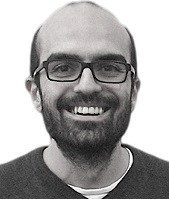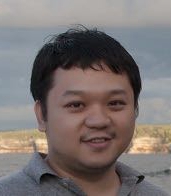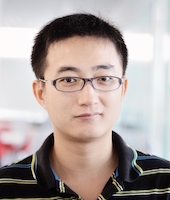招生对象
暑期学校基础课程限招收学员150人,高级课程由于空间有限会限制招生规模。暑期学校重点招收可视化相关方向硕士研究生、博士研究生,同时可接受少量青年教师、非高校学员和优秀高年级本科生。经考核,合格者均可获得暑期结业证书。
2019年北京大学可视化发展前沿研究生暑期学校
第十一期2019年北京大学可视化发展前沿研究生暑期学校将于2019年7月10 - 19日举行。
基础班
2019年7月10日-12日为可视化基础课程,主要配合北京大学最新可视化MOOC材料,结合可视化前沿技术,讲授可视化技术基础知识。该部分课程限招收学员150名。需要提交相关申请。如已经报名参加ChinaVis 2019成都会议,在校学生可减免学费,非在校学生学费减半。
高级班
2019年7月15日-19日为可视化高级课程,邀请海内外在可视化研究领域具有深厚造诣的知名学者,面向学员系统探讨本领域的前沿理论和研究方法。 由于空间有限,申请进入此阶段深度系统学习的学员,需要提交相关推荐信等资料。国内各大院校和研究院所中相关专业的在校硕士、博士研究生和青年教师,或者企业从事相关研发人员均可申请。
暑期学校同时鼓励少量对可视化领域有浓厚兴趣,有志于申请北京大学研究生的优秀高年级本科生参加学习,请在申请时注明相关信息。
承办单位
北京大学机器感知与智能教育部重点实验室
北京大学大数据分析与应用技术国家工程实验室
北京图象图形学学会
技术支持
北京大学计算中心
因特尔公司
暑期学校基础课程限招收学员150人,高级课程由于空间有限会限制招生规模。暑期学校重点招收可视化相关方向硕士研究生、博士研究生,同时可接受少量青年教师、非高校学员和优秀高年级本科生。经考核,合格者均可获得暑期结业证书。
学员选拔采取自由报名,择优录取的方式。研究生报名高级课程需要有导师的推荐信。报名材料由专家委员会审查后决定录取名单。
在校生学费2000元,非在校生学费4000元。
报名名额限额内学生学员若已经报名参加ChinaVis 2019成都会议,可免除本次学费(基础班);非学生学员可减半学费。
北大校内学生免学费。
在校生学费3000元,非在校生学费6000元。
北大校内学生免学费。
提交申请材料页面: http://www.chinavis.org/s19/register/index.html
请在提交申请材料页面填写所需信息。对于参加高级班的学员,请推荐人将推荐信电子邮件提交到到邮箱pkuvis@pku.edu.cn,即完成全部申请,经过专家委员会审核通过的申请将会收到通知。
暑期学校报名截止日期为6月24日,录取结果通知之后会分批发送至注册邮箱。
学费在接到录取通知后规定时间内支付,开学后领取发票,开具发票后不能退款。
| 日期 | 时间 | 讲者 | 内容 |
|---|---|---|---|
| 7月10日 | 9:00-12:00 | 袁晓如 | 数据可视化总述 |
| 14:00-17:00 | 袁晓如 | 可视化基本构型 | |
| 7月11日 | 9:00-12:00 | 徐瑞鸽 | A Concept-driven Approach to Data Visualization |
| 14:00-17:00 | 袁晓如 | 可视化交互 | |
| 7月12日 | 9:00-12:00 | 袁晓如 | 北大可视化实验室-案例分析 |
| 14:00-17:00 | 袁晓如 | 如何开展可视化研究 |
| 日期 | 时间 | 讲者 | 内容 |
|---|---|---|---|
| 7月15日 | 9:00-12:00 | 袁晓如 | 可视化前沿 |
| 14:00-17:00 | 曾伟 | Recent Advancements in Visualization, Selection, and Analysis for Movement Data | |
| 7月16日 | 9:00-12:00 | 麻晓娟 | Designing and Conducting Research Activities Involving Humans in User-Centered Design |
| 14:00-15:30 | 曾伟 | Recent Advancements in Visualization, Selection, and Analysis for Movement Data | |
| 15:40-17:10 | Aaron Knoll | Visualization with the Intel Rendering Framework | |
| 7月17日 | 9:00-12:00 | 麻晓娟 | Designing and Conducting Research Activities Involving Humans in User-Centered Design |
| 14:00-17:00 | Bruce Cherniak | Hands-on Tutorial with Intel OSPRay and ParaView | |
| 7月18日 | 9:00-12:00 | Cagatay | Doing Data Science Visually — A Primer on Modelling High-dimensional and Spatio-temporal Data through Visual Analytics |
| 14:00-17:00 | 陶钧 | 交互式方法在科学数据中的应用 | |
| 7月19日 | 9:00-12:00 | Cagatay | Doing Data Science Visually — A Primer on Modelling High-dimensional and Spatio-temporal Data through Visual Analytics |
| 14:00-16:00 | 袁晓如 | 交流分享 |
课程摘要 : 数据可视化主要旨在借助于人的视觉感知通道,通过把数据转化为图形图像,清晰有效地传达与沟通信息,是数据探索分析的重要手段。我们将综述可视化的历史沿革和重要的基本原理。
课程摘要 : 本节课介绍可视化面向不同类型数据所发展的不同构型设计,包括表格类型、高维数据、网络数据、时空数据等不同类型对应的构型。
课程摘要 : This talk explores a concept-driven process and method for creating effective and interesting visualizations. Coupled with a few hand-on exercises, we’ll cover generating suitable, exciting concepts and ideas for visualization; collecting and examining fitting data; developing and selecting appropriate, effective presentation; designing and enhancing the aesthetics and impact of final outcome. We will also broadly discuss how to use data visualization as a means for communicating ideas and stories through review of various methods and approaches for visualizing data. This talk aims to help both artists/designers and data researchers to expand their approach to visualization, hopefully to achieve certain balance among aesthetic quality, design-thinking and statistical rigor in their work.
课程摘要 : 数据可视化中,数据集通常很大,一般情况下不存在能包括全部数据信息的视图。交互提供了用户与计算机交流的渠道,面对不同的分析任务,用户可以调整相应的可视化结果。如何有效地设计交互,是数据可视化中非常重要的部分。
课程摘要 : 基于北大可视化实验室的优秀项目,本次课程从案例分析的角度介绍优秀可视化的各个要素。
课程摘要 : 本次课程研讨初学者如何开展可视化研究。
课程摘要 : 本节课程讲授国内外可视化的前沿进展和未来趋势。
课程摘要 : Movement is a key element of human activities. The understanding of movement can benefit many applications including traffic management and urban development. Hence, movement visualization has always been a hot research topic in cartography, GIS, and transportation. However, as increasing amounts of movement tracking data are being collected, conventional visualization methods such as space-time cube and flow map, can easily cause significant visual clutter and occlusion issues. This talk reports recent advancements in visualization, selection, and analysis methods for movement data, followed by an in-depth discussion of their applicability and limitations. Assorted examples on urban traffic data will be presented to demonstrate real-world usage scenarios.
课程摘要 : Interacting with people to obtain first-hand insights is a critical practice that occurs throughout a human-centered design process. Across four lectures with in-class exercises, we will introduce the key concepts, common tactics, and important lessons in the design and execution of various types of user studies, such as needfinding, iterative design feedback, and systematic evaluation. We will also review some basic methods to analyze and interpret user study results.
课程摘要 : The Intel Rendering Framework is a suite of open-source libraries and frameworks for large-scale high-fidelity visualization on Intel architecture. It includes the Embree ray tracing kernels, the OSPRay ray tracing API for visualization, the OpenImageDenoise library and OpenVKL volume kernel library. In this talk we will cover recent advancements including distributed frame buffer functionality, path tracing materials, unstructured mesh volumes, Tapestry for web-based streaming visualization, OSPRay Studio for lightweight data exploration, and full integration in Kitware’s ParaView platform.
课程摘要 : This event will consist of a hands-on walkthrough of several demos using the Intel OSPRay ray tracing API for scientific visualization, a tutorial for end-users on how to easily use OSPRay in Kitware’s Paraview platform, and a break-out session.
课程摘要 : With the increasing availability of computational data analysis and modelling tools that can be utilised out-of-the-box, the route from data to results is now much shorter. However, these advancements also come together their own limitations, and a data scientists need to be aware of the pitfalls and act carefully to question every observation and method used within each step of the data analysis process. Visual analytics approaches where interactive visualisations are coupled tightly with the algorithms offer effective methodologies in conducting data science in such inquisitive, rigorous ways. This tutorial will discuss how visual analytics can facilitate such practices and will look at examples of research on how data can be transformed and visualised creatively in multiple perspectives, on how comparisons can be made within different models, parameters, and within local and global solutions, and on how interaction is an enabler for such processes.
We will investigate how interactive data analysis techniques can transform the data analysis pipeline from the wrangling to the modelling stage. We will discuss a series of techniques that are specifically developed for working with high-dimensional and spatio-temporal datasets. We will try to demonstrate how visual analytics fosters a more comprehensive, richer modelling process by facilitating an inquisitive, reflective and critical approach to doing data science and how it enables us to ask the right questions.
课程摘要 : 随着当今计算性能的高速发展,科学模拟计算在各科学研究、工程实践领域中的应用越来越广泛,而其起到的作用亦与日俱增。然而,由于数据本身的不可见性,研究人员必须借助可视化工具观察、理解数据中蕴含的物理现象,从而达到验证科学假设乃至提出新的科学构想的目的。当前科学模拟计算呈现规模大、复杂度高等特征,给科学家通过视觉系统感知可视化传递的信息造成了极大困难,也为可视化研究带来了重大挑战。在此报告中,我将讨论如何通过在科学可视化中引入交互式探索手段,从而帮助科学家在观察数据的过程中将展示的数据化繁为简,从大规模复杂数据中发掘关键特征及其内在联系。我将结合流场数据以及时变多变量数据这两类常见的科学数据,介绍这些方法及理解科学数据中的应用。
 袁晓如
袁晓如
讲者简介 : 袁晓如博士是北京大学信息科学与技术学院研究员,博士生导师,机器感知与智能教育部重点实验室副主任,大数据分析与应用国家工程实验室常务副主任。2008年初在北京大学建立可视化与可视分析实验室,研究方向包括复杂流场数据可视化,高维/时空数据,交通、社会媒体数据的分析,可视化的快速构建方法。高动态范围可视化的工作获得2005年IEEE VIS大会最佳应用论文奖。2013年来指导实验室团队7次在IEEE VAST可视化分析挑战赛中获奖。数十次担任IEEE VIS, EuroVis, IEEE PacificVis等国际可视化会议程序委员会委员,2017年 IEEE VIS大会论文共同主席(SciVis),创建中国可视化与可视分析(ChinaVis)大会。中国计算机学会理事,杰出会员,杰出讲者。中国计算机学会大数据专家委员会委员,人机交互专委会常委委员和计算机辅助设计与图形学专委会委员。中国图象图形学学会理事、可视化与可视分析专业委员会主任。
 Cagatay Turkay
Cagatay Turkay
讲者简介 : Cagatay Turkay is a Senior Lecturer in Applied Data Science at the giCentre at City, University of London. He has a PhD in visualization (University of Bergen), MSc. (Sabanci Uni., Istanbul), and BSc. (METU, Ankara) in Computer Science. He has also served as a visiting research fellow at Harvard University in 2013. His research mainly focuses on the tight integration of interactive visualizations, data analysis techniques and supporting exploratory knowledge and capabilities of experts. He has a special interest in high-dimensional, temporal data from bioinformatics and the biomolecular modelling domain. He has published multiple papers in IEEE TVCG, EuroVis, Computer Graphics Forum, etc., and in 2016, his paper at the IEEE VIS (InfoVis) received an Honorable Mention. He won the Young Researcher Award in EuroVis 2019. He is the open practices chair for IEEE VAST at VIS 2019. He has also served during multiple years on the program committee for IEEE VIS, EuroVis, EuroVA, etc. He has served as a guest editor for ACM Transactions on Interactive and Intelligent Systems, IEEE Computer Graphics and Applications and editorial board member for Machine Learning and Knowledge Extraction Journal.
 麻晓娟
麻晓娟
讲者简介 : Xiaojuan Ma is an assistant professor of Human-Computer Interaction (HCI) at the Department of Computer Science and Engineering (CSE), Hong Kong University of Science and Technology (HKUST). She received the Ph.D. degree in Computer Science at Princeton University. She was a post-doctoral researcher at the Human-Computer Interaction Institute (HCII) of Carnegie Mellon University (CMU), and before that a research fellow in the National University of Singapore (NUS) in the Information Systems department. Before joining HKUST, she was a researcher of Human-Computer Interaction at Noah's Ark Lab, Huawei Tech. Investment Co., Ltd. in Hong Kong. Her background is in Human-Computer Interaction. She is particularly interested in data-driven human-engaged computing in the domain of ubiquitous, social, and crowd computing and Human-Robot Interaction.
 陶钧
陶钧
讲者简介 : 陶钧,2018年9月起担任中山大学数据科学与计算机学院副教授,博士生导师,入选中山大学“百人计划”。其于2015年获得密歇根理工大学计算机科学专业哲学博士学位,2015年至2018年于圣母大学计算机科学与工程系任博士后研究员。其主要研究方向包括:科学可视化,尤其是信息论,优化方法,和交互探索方法在流场可视化方面的应用;以及对图像数据集和网络的可视分析和探索。在高水平国际期刊及会议发表论文论文30余篇,其中包括可视化领域顶级期刊TVCG论文8篇。其于2015年获得密歇根理工大学的Dean's Award for Outstanding Scholarship以及Finishing Fellowship,于2013年获得IS&T/SPIE VDA会议的最佳论文奖及2019年获得VDA会议的杰出论文奖。
 曾伟
曾伟
讲者简介 : 曾伟博士,中国科学院深圳先进技术研究院,副研究员。于2011、2015年分别获得新加坡南洋理工大学计算机专业本科和博士学位。研究领域包括可视分析、信息可视化、虚拟及增强现实、人机交互等。发表国际顶尖学术期刊和会议论文10余篇,其中包括IEEE TVCG、IEEE VIS、EuroVis、IEEE TITS、顶级期刊和会议论文。获得International Conference Information Visualisation最佳论文一次。曾任PacificVis 2019 海报联合主席,IEEE T-CSS期刊客座编委,ChinaVis、 IVAPP等学术会议的程序委员会委员,IEEE Vis、EuroVis、IEEE TVCG、IEEE TITS等会议和期刊的审稿人。
 Aaron Knoll
Aaron Knoll
讲者简介 : Aaron Knoll is a researcher at the SCI Institute at the University of Utah working on ray tracing methods for large-scale scientific visualization, improving CPU programming models for visualization and pursuing new collaborations on in situ and streaming visualization with CEDMAV. He collabrates with the Intel Parallel Computing Center for Data Analysis and Visualization. He received Ph.D. from the SCI Institute at the University of Utah in 2009, which focused on on methods for ray tracing implicit surfaces, particularly applied to visualizing large data on CPUs. He was a postdoctoral fellow at the University of Kaiserslautern in Germany, and then at Argonne National Laboratory, investigating multifield volume rendering and molecular visualization, respectively.
 徐瑞鸽
徐瑞鸽
讲者简介 : Rebecca Ruige Xu currently teaches computer art as an Associate Professor in College of Visual and Performing Arts at Syracuse University. Her artwork and research interests include artistic data visualization, visual music, experimental animation, interactive installations, digital performance and virtual reality. Her recent work has been appeared at: IEEE VIS Arts Program; SIGGRAPH & SIGGRAPH Asia Art Gallery; ISEA; Ars Electronica; Museum of Contemporary Art, Italy; Los Angeles Center for Digital Art, USA; FILE– Electronic Language International Festival, Brazil; Techfest -Technical Arts Exhibition, India; Colloquium culture and digitization, Switzerland; CYNETart, Germany; International Digital Art Exhibition, China; Boston Cyberarts Festival, USA. Xu has been a research fellow at Transactional Records Access Clearinghouse, Syracuse University since 2011. Xu served on the Media Arts Advisory Panel for the U.S. National Endowment for the Arts. She also worked for New York State Council on the Arts and Missouri Arts Council. Xu is currently the Chair of China VIS conference Art Program, the Chair of IEEE PacificVis Visual Storytelling Contest, and is on the Executive Committee for the Association of Chinese Artists in American Academia.
 Bruce Cherniak
Bruce Cherniak
讲者简介 : Bruce is a senior software engineer and currently develops the Intel Rendering Framework: OSPRay open scalable ray-trace renderer. He has developed for a variety of Intel graphics solutions, including the OpenGL driver and rendering pipeline on the Larrabee Project. His broad graphics experience spans from gaming to professional CAD/DCC and physically-based rendering. Bruce has 30 years of experience in graphics algorithms and GPU driver software.